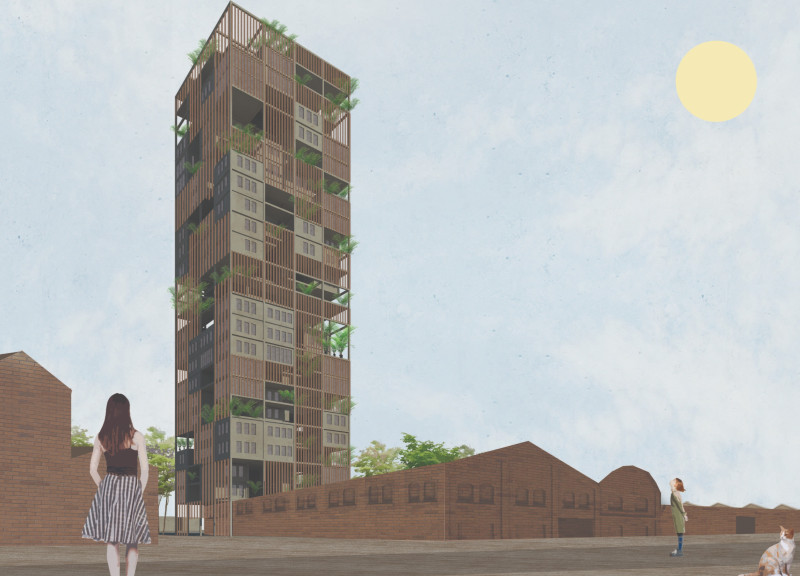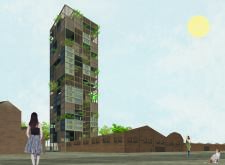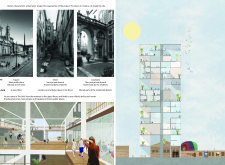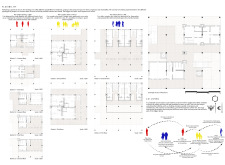5 key facts about this project
Co-Living in Rome is a noteworthy initiative that aims to address urban housing challenges through the reuse of abandoned spaces. Located in the heart of Rome, the project emphasizes sustainability and aims to create an affordable and connected living environment for residents. The design seeks to integrate seamlessly with the historical aspects of the city while providing modern amenities suited to contemporary lifestyles.
Architectural Organization
The layout introduces a clear structure that divides public and private areas. The square stands as the main public space, encouraging social interactions among residents and visitors alike. It serves as a gathering point. The street, functioning as a semi-private area, allows residents to engage with each other in a more personal setting. The courtyard offers a more secluded environment, providing residents with a peaceful retreat from the hustle of city life.
Spatial Flexibility
The design features a grid system measuring 3 meters by 3 meters. This layout enables flexibility in the arrangement of living spaces, allowing for different configurations based on individual preferences for privacy and communal living. Housing districts within the project cater to various resident types—singles, couples, and older adults—making it suitable for a diverse population. Each area is designed to meet specific needs while maintaining a cohesive community.
Material Reuse
Emphasizing sustainability, the project focuses on the adaptive reuse of existing structures rather than the use of new materials. This approach reduces waste and limits the environmental impact associated with construction. By revitalizing old buildings, the design enhances the character of the area and fosters a connection between the past and present. It recognizes the importance of history while creating spaces for future living.
Community Engagement
Engagement and cooperation among residents are central to the design. Shared activities, such as community gardening, workshops, and social events, promote interactions and help strengthen neighborly bonds. Residents are encouraged to share their skills and participate in maintaining common spaces, which fosters a sense of belonging. This approach not only supports self-sufficiency but also builds a vibrant community atmosphere.
The project incorporates communal spaces that reflect everyday life. Urban gardens and workshops invite collaboration and creativity, creating an environment conducive to social interaction. Each component contributes to a living community that aligns well with the lively spirit of Rome, allowing residents to thrive in their daily engagements.





















































